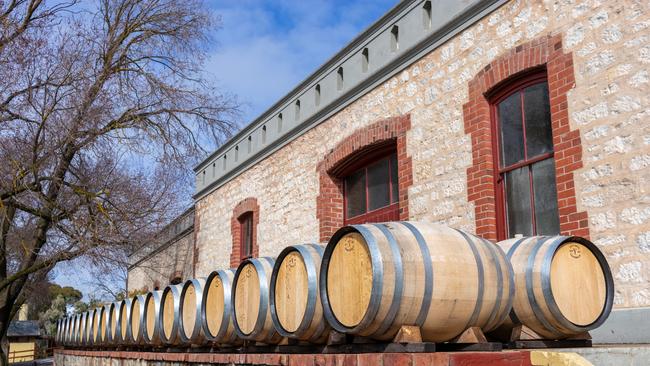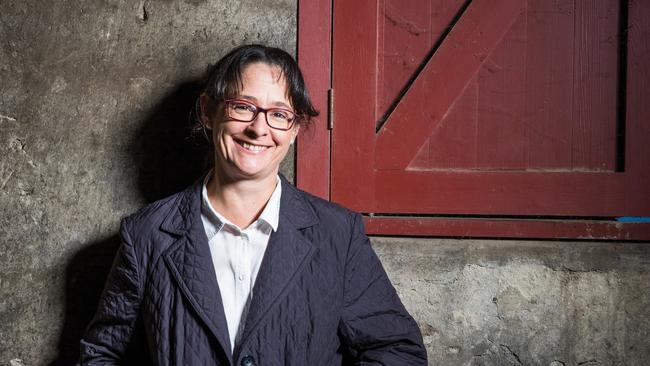Why China’s imports won’t cure Aussie wine industry pain
China’s restart of Australian wine imports won’t be enough to offset the global supply and demand problems plaguing the local wine sector.

China’s restart of Australian wine imports won’t be enough to offset the global supply and demand problems plaguing the local wine sector.
The oldest family-owned wine business in the nation warns tough times are ahead for an industry facing shrinking alcohol markets globally and oversupply that is punishing grape growers and wineries.
Hill-Smith Family Estates, which owns the 175-year-old Yalumba winery in the Barossa Valley and other brands across Australia and New Zealand, says China’s lifting of prohibitive tariffs since March 31 has seen Australian wine starting to flow back there, but the overall Chinese wine market today is a fraction of its pre-pandemic size.
Hill-Smith’s head of sustainability and brand ambassador, Louisa Rose, said the Chinese economy was weaker than it was before the tariffs and its people were not buying and drinking as much wine.
“I don’t think anybody expects it to get back to where it was,” said Ms Rose, one of the speakers at The Australian Competitive Advantage Boardroom Series event in Adelaide on Thursday.
Hill-Smith Family Estates has already had its first order from China, she said.
“We were lucky, in a sense, that our importer and distributor is still in existence.” Other wine distributors disappeared after losing all their business when China slapped tariffs above 200 per cent on Australian wine exports in 2021.
China’s wine weakness was overshadowed by global pressures, Ms Rose said.
“The whole globe is drinking less wine than it was,” she said.

However, Australia and the world have been producing too many grapes for several years.
“When you have a lake of excess wine, it means that the value of that wine becomes lower than the cost of production, and that’s not sustainable for any business,” Ms Rose said.
“We have got to get that balance of supply and demand in balance, so we don’t continually have an oversupply, because that makes it very difficult for anyone to be competitive.”
Ms Rose said vineyards would have to be reduced, while grape growers and some wineries would go out of business.
“We have got to be looking in some cases at how people can exit the industry with some sort of dignity, and it’s going to be tough,” she said.
Towns, communities and generations of people relied on Australia’s wine industry, Ms Rose said.
“It’s a big social issue that we need to address and work through, and it’s not easy,” she said.
“If it was easy, the red pen would have been out, and we would have sorted it out by now.”
A separate Wine Industry Insights report released last month by KPMG described the wine industry as resilient but says “urgent and large-scale restructuring is required to address the corrosive and enduring supply/demand imbalance”.

KPMG says uneconomic pricing is leaving some growers with no other option than to exit the industry.
“Global wine consumption has decreased by 4 per cent over the past 10 years, whilst consumption in Australia is trending at 1.8 per cent decline annually,” its report says.
“It is important to note that the China market for wine imports is now a third of what it was five years ago.”
Other factors hurting demand are cost-of-living pressures reducing consumer spending overseas, changing consumer tastes and a shift to beverages containing less alcohol, KMPG says.
“The ongoing pressure on commercial wine producers has led to grape prices as low as $100 per tonne or no home for their grapes,” it says.
Ms Rose said the heady days of China pre-Covid had covered up the oversupply issues “because it looked like we didn’t have enough grapes”.
“The reality is that we have too many grapevines in the ground producing too many grapes, so we need to reduce the vineyards,” she said.
Australian wine companies were now more wary about the fragility of exports to China, Ms Rose said.
“In the heady days of China we would have chats as an industry, saying it was dangerous putting all our eggs in one basket like that,” she said.
“But they were demanding our wine. You’re not going to say, ‘I’m not going to sell you that wine just in case I can sell it somewhere else and have a more balanced portfolio’. That’s not how it works – you take what is available at the time.”




To join the conversation, please log in. Don't have an account? Register
Join the conversation, you are commenting as Logout